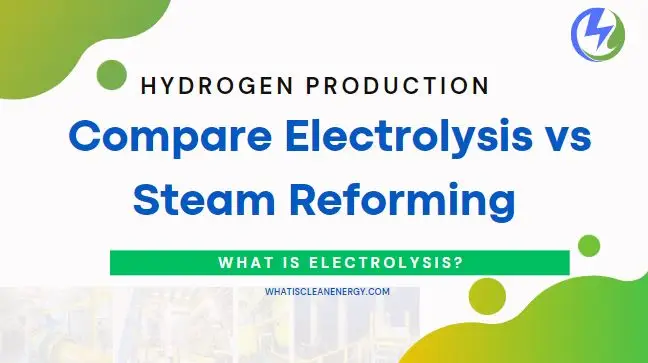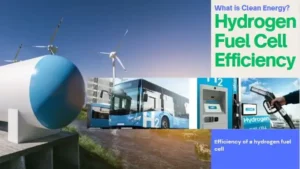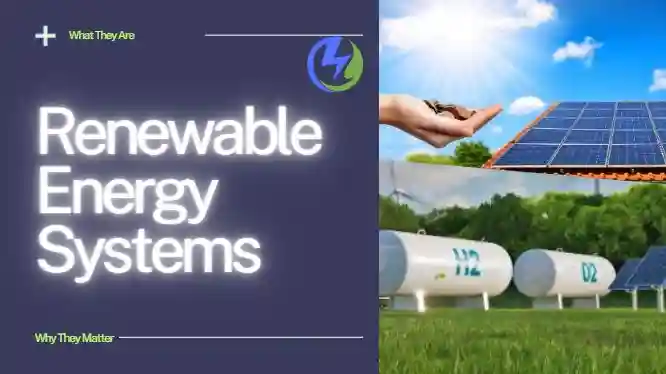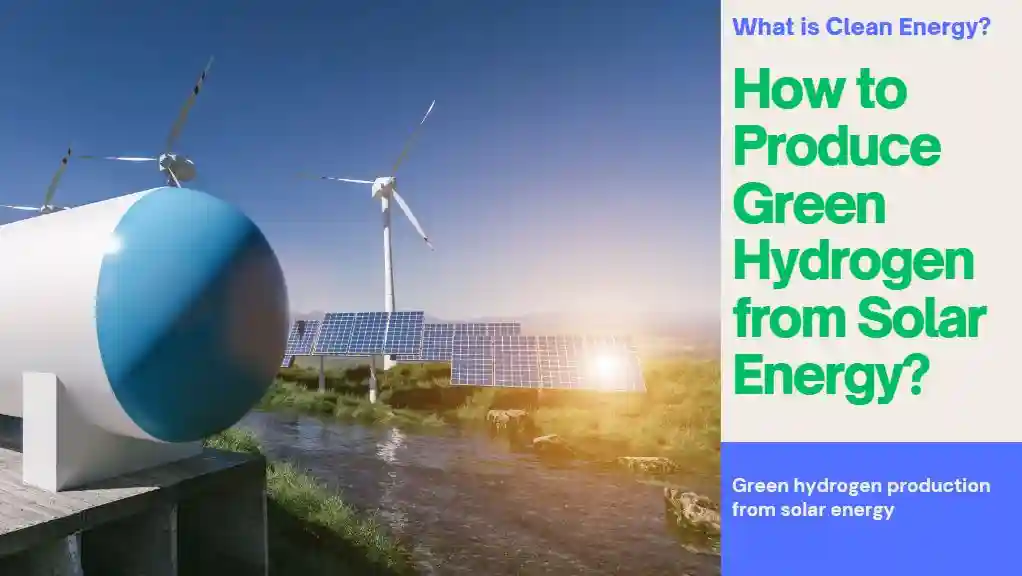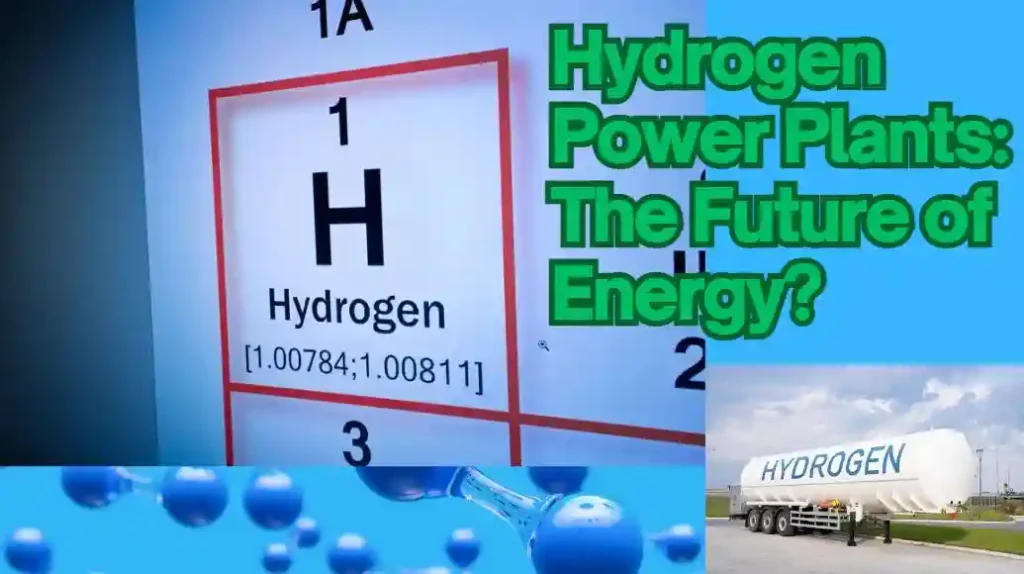Hydrogen is a gas that has no color, smell, or taste. It is the lightest and most abundant element in the universe. Hydrogen has a lot of energy in it, which means that it can be used as fuel for many things, such as cars, buses, trucks, trains, ships, planes, homes, factories, and power plants.
Hydrogen can also be combined with other elements to make different chemicals, such as ammonia, methanol, or synthetic fuels. However, hydrogen is not found by itself in nature. It is usually attached to other elements, such as oxygen in water (H2O) or carbon in natural gas (CH4). To use hydrogen as a fuel or a chemical, we need to separate it from the other elements. This process is called hydrogen production.
Various methods exist for producing hydrogen from different sources. Nature can naturally replenish renewable sources, but it cannot regenerate non-renewable sources. Clean sources do not contribute to pollution or global warming, whereas dirty sources are associated with pollution and global warming.
In this article, we will compare two of the most common methods for producing hydrogen: electrolysis and steam methane reforming. We will see how they work, what their advantages and disadvantages are, and what their impacts are on the environment and society. Let’s dive into Electrolysis vs Steam Reforming.
What is electrolysis?
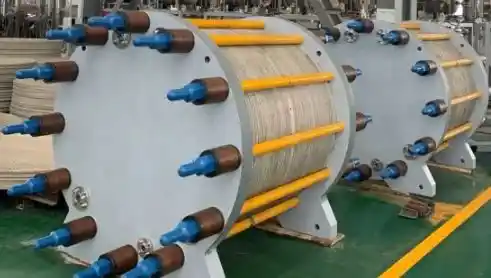
Electrolysis is a method of producing hydrogen from water using electricity. Water is made of two hydrogen atoms and one oxygen atom (H2O). When we pass an electric current through water, we can split it into hydrogen gas (H2) and oxygen gas (O2). This process is called electrolysis.
Electrolyzer
Electrolysis can be done with a device called an electrolyzer. An electrolyzer has two electrodes (metal plates or wires) that are connected to a power source (such as a battery or a solar panel). The electrodes are submerged in water or a liquid that contains water (such as an acid or a base). The power source provides an electric current that flows through the electrodes and the water. The electric current breaks the water molecules into hydrogen and oxygen atoms. The hydrogen atoms gather at one electrode (called the cathode) and form hydrogen gas. The oxygen atoms gather at the other electrode (called the anode) and form oxygen gas.
Electrolysis produces how much hydrogen based on the amount of electricity used. The more electricity we use, the more hydrogen we get. The electricity can come from any source, such as coal, natural gas, nuclear, hydro, wind, or solar power. However, not all sources of electricity are equal. Some sources are renewable and clean, while others are non-renewable and dirty.
Electrolysis is a clean way to produce hydrogen if we use renewable and clean electricity sources, such as wind or solar power. This type of hydrogen is called green hydrogen because it does not emit any greenhouse gases or pollutants. But, electrolysis is a dirty way to produce hydrogen if we use non-renewable and dirty electricity sources, such as coal or natural gas power plants. This type of hydrogen is called grey hydrogen because it emits greenhouse gases and pollutants.
Electrolysis is also an expensive way to produce hydrogen because it requires a lot of electricity and water. Electricity and water can be costly and scarce in some regions. Electrolysis also requires special equipment and materials that can withstand high voltages and corrosive liquids.
What is steam methane reforming?
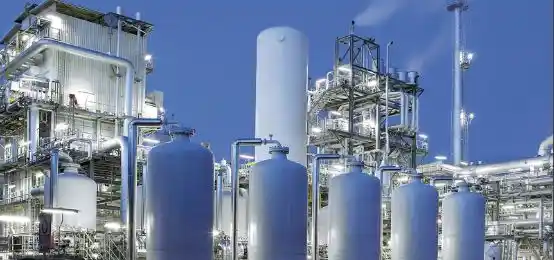
Steam methane reforming is a method of producing hydrogen from natural gas using heat and steam. Natural gas is mainly made of methane (CH4), which is a molecule that has one carbon atom and four hydrogen atoms. When we heat natural gas with steam (water vapor) at high temperatures (700°C–1,000°C), we can break it into hydrogen gas (H2) and carbon monoxide gas (CO). This process is called steam methane reforming.
Steam methane reforming can be done with a device called a reformer. A reformer has tubes that are filled with natural gas and steam. Burners, using natural gas or other fuels, heat the tubes. The heat causes a chemical reaction between natural gas and steam that splits them into hydrogen and carbon monoxide.
Steam methane reforming produces hydrogen, depending on the quantities of natural gas and steam utilized. The more natural gas and steam we use, the more hydrogen we get. However, not all natural gas and steam are equal. Some natural gas comes from fossil fuels, while others come from biomass or biogas. Some steam comes from water, while others come from waste heat or renewable heat sources.
Steam methane reforming
Steam methane reforming is a dirty way to produce hydrogen because it emits a lot of carbon dioxide and other pollutants. Carbon dioxide is a greenhouse gas that causes global warming. Other pollutants include nitrogen oxides, sulfur oxides, and particulate matter that cause air pollution and health problems. To reduce the emissions from steam methane reforming, we can use a technology called carbon capture and storage (CCS) or carbon capture and utilization (CCU). CCS is the process of capturing the carbon dioxide from the reformer and storing it underground or under the sea. CCU is the process of capturing the carbon dioxide from the reformer and using it for other purposes, such as making chemicals or fuels.
Steam methane reforming is also a cheap way to produce hydrogen because it uses natural gas and steam, which are abundant and low-cost in some regions. Steam methane reforming also uses simple equipment and materials that are widely available and reliable.
How do electrolysis and steam methane reforming compare?

Electrolysis and steam methane reforming are two different ways to produce hydrogen from different sources. They have different advantages and disadvantages, depending on the factors we consider. Here are some of the factors we can compare:
- Environmental impact: Electrolysis has a low environmental impact if we use renewable and clean electricity sources, such as wind or solar power. But electrolysis has a high environmental impact if we use non-renewable and dirty electricity sources, such as coal or natural gas power plants. Steam methane reforming has a high environmental impact because it emits a lot of carbon dioxide and other pollutants. However, steam methane reforming can reduce its environmental impact if we use carbon capture, storage, or utilization technologies.
- Economic cost: Electrolysis has a high economic cost because it requires a lot of electricity and water, which can be expensive and scarce in some regions. Electrolysis also requires special equipment and materials that can be costly and rare. Steam methane reforming has a low economic cost because it uses natural gas and steam, which are abundant and low-cost in some regions. Steam methane reforming also uses simple equipment and materials that are widely available and reliable.
- Technical performance: Electrolysis makes very clean hydrogen that works well for many uses. Electrolysis can also change quickly to match changes in wind or solar power. Steam methane reforming makes dirty hydrogen that needs more cleaning for some uses. Steam methane reforming also changes slowly and cannot match the changes in wind or solar power.
- Social acceptance: People like electrolysis because it makes hydrogen from water using clean power. Electrolysis is safe and green. People don’t like steam methane reforming because it makes hydrogen from fossil fuels using heat and steam. Steam methane reforming is risky and dirty.
Conclusion
We learned that electrolysis is a clean way to produce hydrogen from water using renewable electricity sources, such as wind or solar power. However, electrolysis is also an expensive way to produce hydrogen because it requires a lot of electricity and water, which can be costly and scarce in some regions. Steam methane reforming is a dirty way to produce hydrogen from natural gas using heat and steam. However, steam methane reforming is also a cheap way to produce hydrogen because it uses natural gas and steam, which are abundant and low-cost in some regions.

